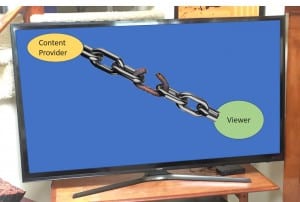
Is Profit from Failure a Good Idea?
Abstract
Kirk and Fred discussing the article that Fred recently posted and the strategy of making a spare parts and service a source of the majority of programs profit.
ᐅ Play Episode
Your Reliability Engineering Professional Development Site
Author of Accelerated Reliability articles and Next Generation HALT and HASS, plus, co-host on Speaking of Reliability.
This author's archive lists contributions of articles and episodes.

Kirk and Fred discussing the article that Fred recently posted and the strategy of making a spare parts and service a source of the majority of programs profit.
ᐅ Play Episode

I posted an article recently by Bloomberg on the Defense Department’s recent disclosure of the escalating support cost of the F-35 Joint Fighter Jet. With over 3,700 views, it was the most read of my posts. The original article on escalating F-35 reliability costs can be read at this link
I posted the article with the comment: “Once a test engineer working for a large DoD contractor once told me at a reliability conference, ‘These new reliability development techniques of HALT and HASS would be a lot easier to implement if spare parts and service did not constitute 60% of the total program profits.’ That was not the first time I have heard a similar comment from a test or reliability engineer or manager working in the defense industry. I believe these engineers working on the reliability end of the programs said these concerns me out of frustration. [Read more…]

Kirk and Fred discussing the question many have, that is if margins are important, why not specify more strength in the product design?
ᐅ Play Episode

Kirk and Fred discussing the common question in empirical limit testing (a.k.a HALT) that many design engineers have. How strength margins above specifications are important for long term reliability.
ᐅ Play Episode

Kirk and Fred discussing the Taguchi loss function and the problem of making it “in spec” but not on target.
ᐅ Play Episode

Kirk and Fred discussing the question of testing of reliability claims with the many variations of a specification, such as water resistance or any specific performance criteria.
ᐅ Play Episode

Kirk and Fred discussing the differences found between what is considered a “Quality” department issue, and what is a “Reliability” department issue.
ᐅ Play Episode

Kirk and Fred discussing the way quality and reliability are seen as different although both may cause the product to be considered a failure in the eyes of the customers.
ᐅ Play Episode

Kirk and Fred discussing the difficulty of getting the failed products, especially low cost systems, back from the field to do failure analysis on.
ᐅ Play Episode

Kirk and Fred discussing what Reliability Engineers do considering the past and current approaches to reliability development
ᐅ Play Episode
 A Crisis in the Home IT department
A Crisis in the Home IT departmentIf you are the head of your home IT department, you may relate to this tale
Last night my wonderful wife Stacy was riddled with angst over the disruption of her binge watching a spy series, a mild crisis with our own IT hardware.
The cause of her disappointment was the failure of our new large screen Ultra High Definition (UHD) Smart TV to deliver a drama series with a reasonable picture and sound quality. [Read more…]

Kirk and Fred discussing the increased expectations of reliability based on experience with past products
ᐅ Play Episode

Kirk and Fred discussing the value of reliability in consumer electronics in comparison to the rapid technological improvements.
ᐅ Play Episode

Kirk and Fred discussing how to show management and other skeptics of highly accelerated limit testing how valuable it can be in improving reliability.
ᐅ Play Episode

Kirk and Fred discussing how to determine when HALT failures are relevant or not relevant to what actually may fail in the field.
ᐅ Play Episode